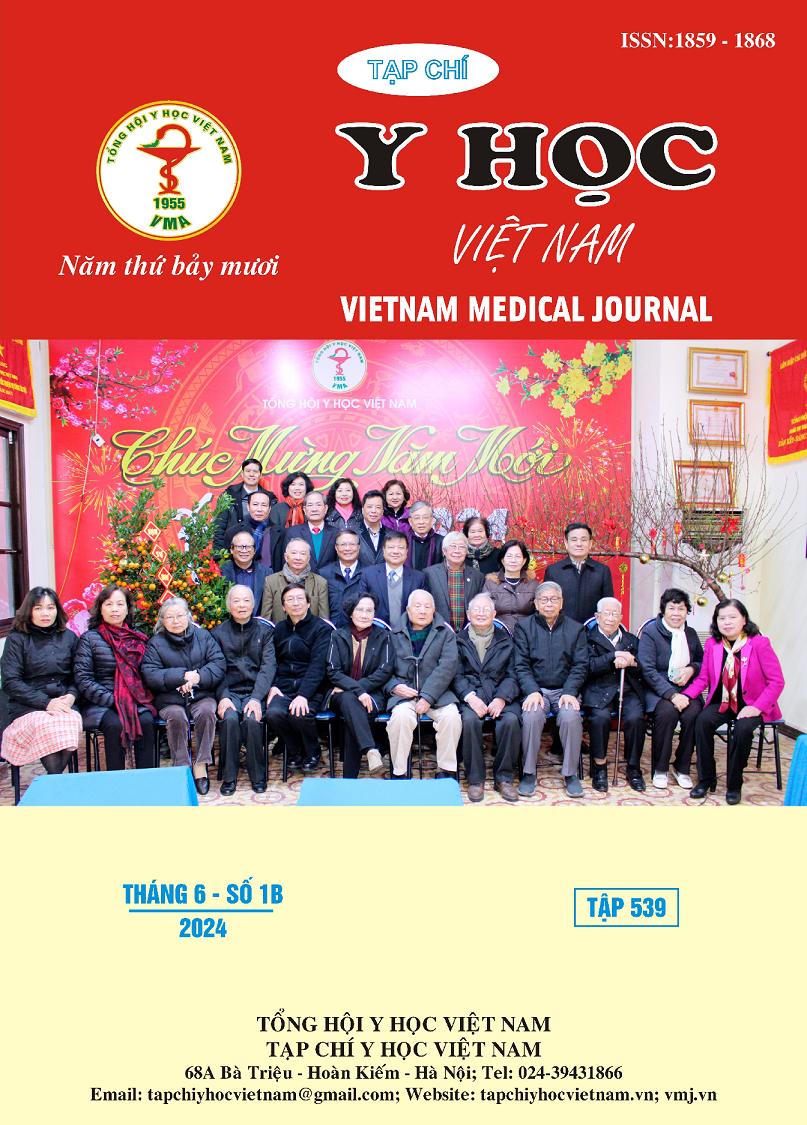SOME FACTORS PREDICTING SHOCK IN CHILDREN 12 MONTHS - 16 YEARS OLD WITH DENGUE HEMORRHAGIC FEVER WITH WARNING SIGNS AT CAN THO: A CROSS-SECTIONAL, SINGLE-CENTER STUDY
Main Article Content
Abstract
Background: Dengue hemorrhagic fever shock in children is a severe form with a high risk of mortality. The demand for understanding predictive factors for shock is increasing to optimize early detection and management of this condition, especially in Dengue hemorrhagic fever with warning signs. Objectives: This study aims to identify some clinical and subclinical factors predicting shock in children with Dengue hemorrhagic fever with warning signs. Materials and methods: A cross-sectional descriptive study was conducted on children aged 12 months to 16 years diagnosed and treated for Dengue hemorrhagic fever with warning signs at Can Tho Children Hospital from April 2023 to January 2024. Results: A total of 104 subjects were selected (15 with shock and 89 without shock) and surveyed for clinical and subclinical characteristics. Logistic regression analysis shows that children exhibiting restlessness-lethargy were at a 4.51 times higher risk of shock (95%CI: 1.12-58.86; p = 0.041). Similarly, children with platelet count < 50,000/µL and hematocrit > 40% were found to have a higher risk of shock (OR = 1.56; 95%CI: 1.09-3.59; p = 0.046 and OR = 8.51; 95%CI: 1.87-103.65; p = 0.013, respectively). Abdominal effusion, in general, also increased the likelihood of shock by 12.40 times (95%CI: 1.2-127.74; p = 0.034). Conclusion: Altered severe consciousness, decreased platelet count, increased hematocrit, and abdominal effusion are significant prognostic factors for shock in children with Dengue hemorrhagic fever with warning signs. Early identification of these risk factors may help timely management and potentially reduce the shock-related mortality rate.
Article Details
Keywords
Dengue hemorrhagic fever with warning signs, shock, restlessness-lethargy, decreased platelet count, increased hematocrit, abdominal effusion.
References
2. Văn Thị Cẩm Thanh. Đặc điểm dịch tễ, lâm sàng, cận lâm sàng và điều trị bệnh nhân sốt xuất huyết Dengue nặng có sốc tại bệnh viện Nhi đồng 2. Luận văn Thạc sĩ Y học. Đại học Y Dược thành phố Hồ Chí Minh. 2017.
3. Nguyễn Ngọc Rạng, Dương Kim Thu. Thiết lập bảng điểm dựa vào siêu âm để tiên đoán sốt xuất huyết Dengue có sốc ở trẻ em. Tạp Chí Y học Việt Nam. 2021; 501(2):195-198.
4. Nguyễn Ngọc Rạng, Trương Thị Mỹ Tiến, Dương Kim Thu, Tôn Quang Chánh, Đinh Thị Bích Loan. Đặc điểm lâm sàng và giá trị các dấu hiệu cảnh báo tiên đoán sốc ở trẻ em mắc sốt xuất huyết Dengue theo bảng phân loại mới của WHO 2009. Kỷ yếu Hội nghị Khoa học bệnh viện An Giang. 2011; 10:62-71.
5. Ashraf N., Minhas A., Fatima K., et al. Risk Factors for Dengue Shock Syndrome in Children Admitted in Federal Govt. Polyclinic Hospital (FGPC) Islamabad. Ann Pak Inst Med Sci. 2023; 19(2):104-109.
6. Cecilia C., Sugianto J.A. Predictor of Dengue Shock Syndrome Among Pediatric Dengue Infection in Limited Resource Setting. J Indon Med Assoc. 2019; 69(4):178-183.
7. Messina J.P., Brady O.J., Golding N., et al. The current and future global distribution and population at risk of dengue. Nat Microbiol. 2019; 4(9):1508-1515.
8. Murthy J.M. Neurological complication of dengue infection. Neurol India. 2010; 58(4):581-584.


